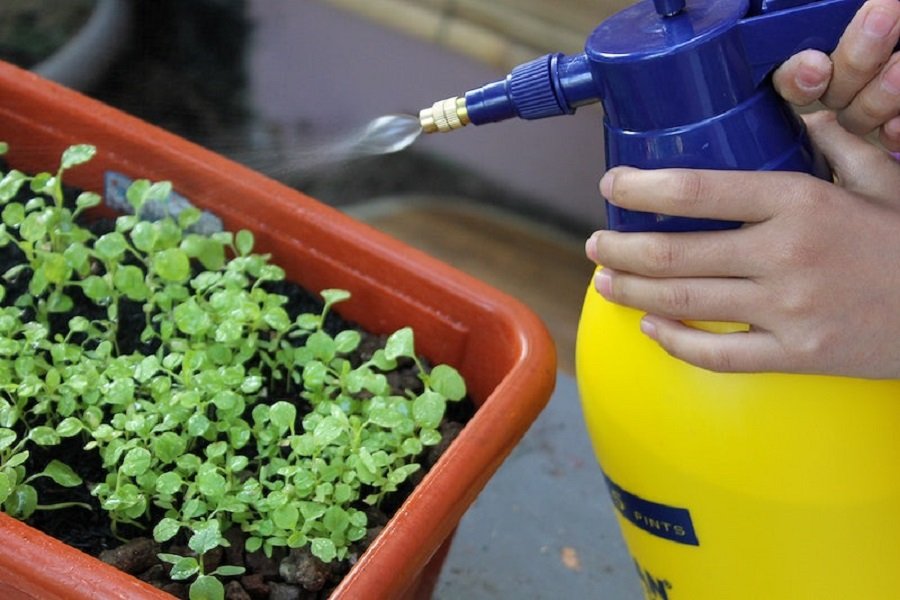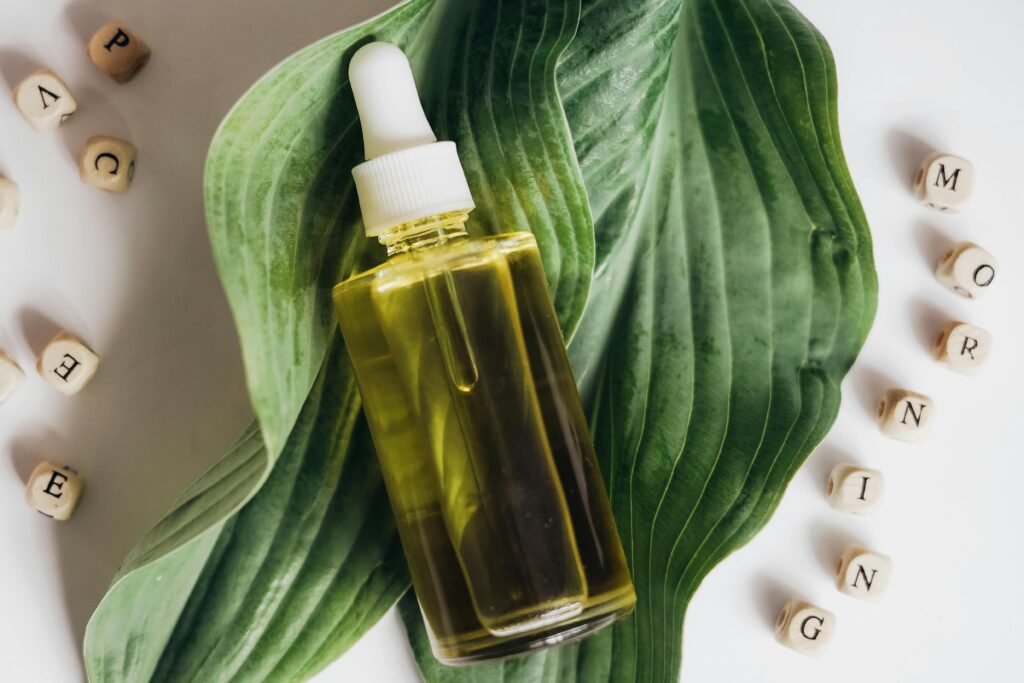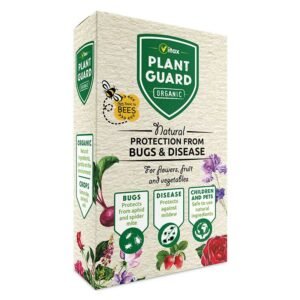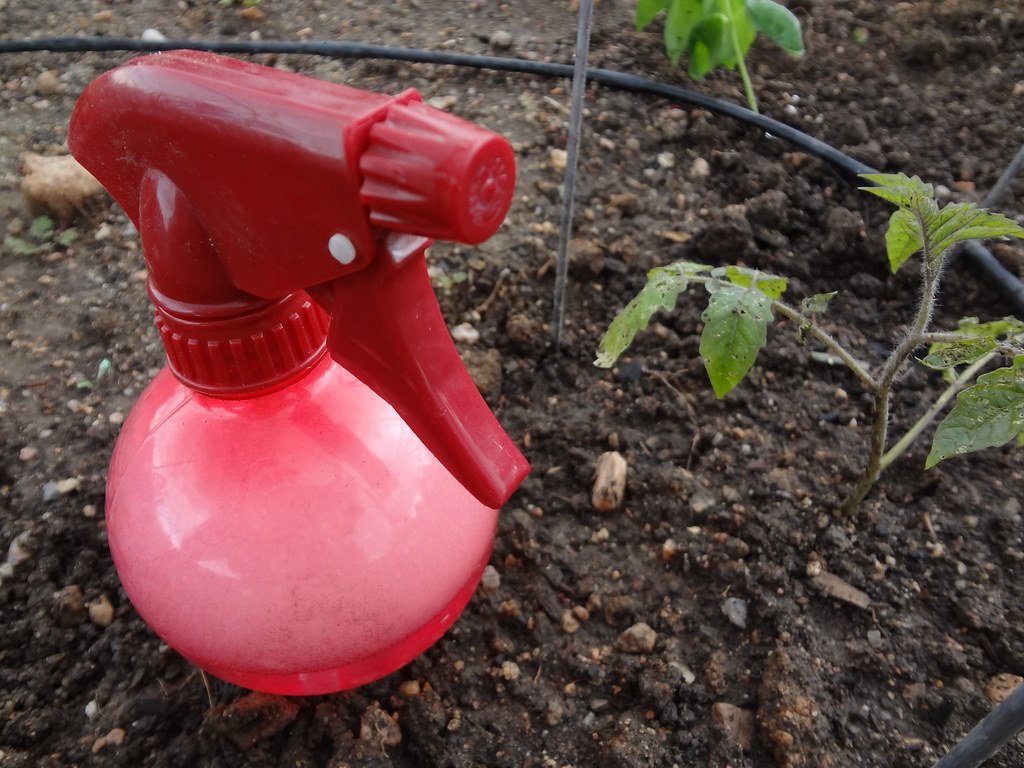Indoor Plant Pesticides-Guide to Healthy Plants

Keeping your plants healthy and pest-free can be painful when common houseplant pests like spider mites, aphids, or mealybugs start. Festering about in the comfort of your home. It is necessary to have an indoor plant pesticide in place to control these pests, or they can quickly ruin your plants and migrate off into every other part of the collection. Indoor plant pesticides are explicitly created for inside, meaning they work to kill whatever pest is causing lawn or garden damage without harming your houseplants (or pets and humans in the household). Although not the same as traditional outdoor pesticides, these products are often low-toxicity or organic formulations that deliver effective pest control while using a softer footprint on our environment.
There are many kinds of indoor plant pesticides, insecticides soaps and oils (e..g., horticultural oil or neem), systemic treatments Choosing the best pesticide according to the pest type and applying it in a right way decides how healthy the plants would be, after all. This article discusses the different types of indoor plant pesticides on offer, their advantages, and how to safely and effectively apply them. Whether you have noticed a small pest problem or an infestation, knowing about indoor plant pesticides is helpful so your lovely houseplants can blossom and shine without interference and be healthy all year long.
Table of Contents
ToggleWhat Is an Indoor Plant Pesticide?
An indoor plant pesticide is a chemical or natural solution to combat pests specific to most common indoor plants. Indoor plant pesticides, however, are usually less toxic than those used outdoors to safeguard the indoor environment and reduce potential risks for people or pets. Pesticides are similar types of substances used to kill anything from flies and ants that hang about on a few tomato plants in the garden to weeds over an area as large as hundreds or acres. Indoor plant pesticides target pests as intended while avoiding any damage to the plants or inflicted harm toward household members.
Most indoor plant pest control products are treated using repellants or on contact and ingestion. Many also provide a preventative claim, which helps keep pests away after the initial treatment. Although they are quite effective, it is crucial to use them responsibly, opening up a much less harmful bottle of Plantshine when the plants do not lead such performance or your household environment doesn’t request an insecticide with no aroma.

Types of Pesticides
Several varieties of indoor plant pesticides can be purchased; each does things a little differently in killing pesky bugs. Find some of the top options below:
Insecticidal Soaps
Insecticidal soaps contain potassium salts and fatty acids that disrupt the cell membranes of soft-bodied insects such as aphids, mealybugs, and spider mites. Many of these soaps are safe for most plants, easy to apply, and relatively low in toxicity. It is often sprayed over the leaves and stems to attack pests. Insecticidal soaps are a good choice for the gardener who prefers to use a mild organic pesticide that can be safely used indoors.
Effective Against: Aphids, mealybugs, spider mites, and whiteflies.

Horticultural Oils
Horticultural oils are usually made from highly refined petroleum or plant oil. They work by suffocating pests. These oils are sprayed on the surface of a plant that will smother pests and eggs, preventing them from breathing. For example, neem oil, a favorite of these oils, also has mild antifungal effects and helps control fungal problems in plants. The oils can burn plants in direct sunlight, so apply them carefully (though they are safe for the planet and indoor environments).
Works On: Scale, two-spotted spider mites, aphids (read one of the studies here), fungus gnat larvae, and powdery mildew.

Neem Oil
It is actually a form of organic pesticide that comes from the seeds of neem trees. It acts like an insecticide and fungicide, departs the nutrition procedure of pests, and offers never-ending control over the crop stage. Neem oil is extremely efficient in treating persistent pests since it kills all residents, from eggs and larvae to adults. Neem oil is a common solution for killing or preventing pests in your indoor plants and is an effective and safe natural pesticide for homeowners.
Effective For: Aphids, mealybugs, spider mites, whiteflies, mildew, and mold.

Systematic Pesticides
Pests eat the pesticide as they feed on our plants, consuming the pesticide that kills them. The advantage of systemic indoor plant insecticides is that a swift and powerful solution to the problem can remedy long-term damage to producers by pests! However, they stay in the plants forever (shorter than forever but longer time). They are most appropriate for extreme pest infestations where other pesticides have failed.
Works on: Stubborn small pests like thrips, aphids, and scales.

Homemade Remedies
If you ask plant lovers, several natural solutions like homemade pesticides are safer and work well for minor pest infestation. These include dish soap liquids, garlic and cayenne pepper mixes, or alcohol sprays. Although most of these solutions are mild, they can sometimes cause damage to delicate plants, so be sure to test them in a small area before using them everywhere.
Works On: Aphids, spider mites, fungus gnats, mealybugs

Pesticides Using from Everyday Item
One way to control indoor plant pests is by creating homemade pesticides using common household items. They also kill pests like aphids, spider mites, fungus gnats, and mealybugs without the use of toxic chemicals, meaning they are safe to use indoors as well. Well, here are a few homemade pesticides that you could try making use of only the easy-to-locate items:
–Dish Soap Spray
A basic combination of mild dish soap and water can do wonders with soft-bodied pests, namely, aphids, spider mites, or mealybugs. The dish soap will break down the waxy protective outer layers of these suckers, and they dehydrate to death!
How to Make: Mix 1–2 teaspoons of a mild, non-detergent soap in a quart warm water You can do this by pouring the solution into a spray bottle, shaking it gently and spraying directly on to the leaves, stems or anywhere you find pests.
Apply Tips: always test on a small part of the plant to ensure it does not produce leaf burn. Repeat every 5–7 days until pests are no more.

Neem Oil Spray
This neem oil is a natural pesticide that competes with the industrial-grade version with its insecticidal, fungicidal, and repellency efforts. It disrupts insect feeding and reproduction, which could be a saving grace for different pests. It can be obtained from a garden store easily and used indoors safely.
How to Make: Mix 1 teaspoon of neem oil and a few drops of dish soap into one quart of warm water. Transfer the mixture to a sprayer, shake well, and mist onto plant surfaces
Apply Tips: Apply the solution in the early morning or late evening, as neem oil can burn plants if it is applied when they are exposed to sunlight. Repeat applications every 2 weeks or as required.
Garlic and Pepper Spray
Because garlic and pepper are natural repellents, they will keep various pests away. The sulfur compounds found in garlic are equally unappealing to insects as well, and any hot peppers such as cayenne or chili contain capsaicin, which prevents even the hungriest of pests from consuming your plants.
How to Make: Also blend 1 clove of garlic, and for further purification, take some teaspoons of cayenne pepper in one quart of water. Allow the mixture to sit overnight, and strain again while adding a few drops of liquid dish detergent. Strain and transfer to a spray bottle.
How to Use: Spray on the foliage corners and undersides, especially as pests found there hide well. Use it every two days until the problem disappears.
Alcohol Spray
Rubbing alcohol (Isopropyl) is especially good at killing pests like mealybugs and scale bugs. Their outer coating melts away, which causes immediate dehydration.
How to Make: Equal parts 70% isopropyl alcohol and water combined. More aggressive pests can be managed using alcohol at full strength, but only after checking a sample of the diluted formula.
Apply Tips: Apply directly on insects with a cotton swab or spray over the plant. Do not use alcohol on sensitive plants, as it can burn leaves.
Baking Soda Fungicide
Baking soda is a natural solution that can be used to control fungal infections, especially powdery mildew. This changes the pH of your leaf surface, making it unfavorable for most fungi.
How to Make: Mix 1 teaspoon of baking soda and a few drops of dish soap in one quart of water.
How to Apply: Spray onto the infected plants weekly as a fungicide. However, do not overuse it since excessive Baking Soda can accumulate in the soil.

Coffee Grounds
Directions for use: This is a natural and sweet-smelling way to repel ants (or any other pests that walk on the ground); it also serves as fertilizer if you have the habit of throwing used coffee grounds in your garden, organic materials attract new life, after all.
USAGE: Scatter a layer of recycling espresso beans onto the dresser surface
Proper Use: Do not over-apply because coffee grounds can form clumps and change the soil pH.
Cinnamon Powder
Antifungal in nature, cinnamon is great for containing a wide range of fungal infections and damping off disease among seedlings. And it helps keep ants and other critters out of the soil.
How to Make: Sprinkle a dusting of cinnamon on the top layer of soil and around the affected areas.
Application Tips: Limited application as too much can upset the soil balance. Read more about homemade pesticide ideas here.

How to Apply
When it comes to indoor plant pesticides, applying them correctly and working smoothly without damaging your plants is very important. A Step-by-Step Guide to Applying Safely
Step 1: Identify the Pest
Ensure that the pest is properly identified before choosing a pesticide. Common pests are treated with different substances, and knowing exactly what you have will help me recommend the best product.
Step 2: Read Product Instructions
Carefully read the pesticide label before using it. The effectiveness and application of indoor plant pesticides depend on the specific product, so you should always follow recommendations to avoid negative effects.
Step 3: Test on a Small Area
If using a new product or DIY treatment, do a small trial patch on the plant. This will teach you how the plant will respond to a full treatment before treating fully.
Step 4: Applying During the Right Window
These chemicals can be very strong, and hot temperatures will only worsen that risk, so cooler mornings or evenings when you apply them are the best time for maximum effectiveness. Do not water immediately because the product will wash away.
Step 5: Reapply as Needed
Most indoor plant pesticides are not one-time applications; you need to apply them again, for the process is repeated at least two or three times, usually every 5-7 days when dealing with insect eggs. Refer to the product application directions; some insects require repeat treatments. You may like to read this article here.
For an in-house gardener, such indoor plant pesticides become a must-have and step inside his maintenance strategy. Aphids, spider mites, and fungus gnats are common pests that prey on indoor plants; feeding on their foliage and roots or spreading upon neighboring ones makes them a threat. Indoor plant pesticides, be they homemade or store-purchased, provide beneficial protection for plants by eradicating pests and hopefully their movement to other host greens in the process. Knowing the different toxic or organic alternatives of how to manage thrips (e.g., insecticidal soap, horticultural oil, neem oil, as well as home-made remedies like dish soap splash or garlic spray), plant owners will be able to adopt a best practice that suits their specific needs and lifestyle using their own favorite type of plants.
Choosing the correct indoor plant pesticide is important, and you must also know if your plants have any particular requirements. Monitoring and maintenance are key, as early detection of these issues provides the best chance for rectifying them. Indoor plants that receive the proper care can thrive in an environment free from pests. With the right knowledge and a dependable supply of indoor plant pesticides, you can have a growing garden inside all year round, leaving your plants challenging, green, and magnificent.
Tabon
Most Viewed
Latest Articles




























